Resources/Cross-curricular
Relevant resources
| Assessment | Diagnostic Questions in Maths Teaching | |

|
Using questions to probe what pupils do, and do not, understand These questions provide a useful starting point from which to think about the use of diagnostic questions(ta) for assessment(ta) for learning and whole class(ta) dialogic teaching(ta). They may be useful for teachers in their own right as sample questions, or to think about the best way to deliver feedback, use ICT tools effectively, and support learners through assessment. In this context the questions should be considered with a critical eye. Teachers might like to think about:
Teachers might take this as an opportunity to engage in sharing practice(ta) to think about how to use such questions in the classroom - perhaps using mini-whiteboards(tool) or ICT tools - and outside of them, perhaps using quiz(tool) or voting(tool) software. | |
| Assessment | Using Assessment to Raise Achievement in Maths | |

|
Learning goals; self & peer assessment; effecting questioning; marking and case studies This resource explores approaches to assessment(ta) in maths, including the sharing of learning objectives(ta), group work(ta), whole class(ta) assessment, questioning(ta) and more. Four case studies serve as useful discussion prompts to share practice(ta). This .doc version of the QCA's 'Using assessment(ta) to Raise Achievement in Maths' allows schools to select parts of the document that are most relevant to them.
| |
| Assessment | Changing KS3 Questions for Engaging Assessment | |
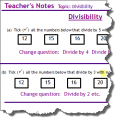
|
A large set of questions grouped by topic, paper, and national curriculum level Test questions are often seen as uninteresting and useful only to assess pupils summatively. This resource however allows questioning(ta) to be used to support pupils’ revision, creativity and higher order(ta) problem-solving in class. The tasks could be conducted via whole class(ta) discussion(ta) or assessment(ta), perhaps using mini-whiteboards(tool), or in small group work(ta) situations.
| |
| Astronomy | Recreating the Big Bang | |

|
An introduction to the creation of the Universe. This presentation offers a tour of the European Organization for Nuclear Research (CERN) and explains why it is worth spending money on one experiment. It then delves into particle physics, looking at sub-atomic particles to offer analogies for what these particles are. The session focuses on whole class(ta) dialogue(ta) and higher order(ta) thinking skills as well as exploring scientific language(ta). This 4th session and the 5th are together the most theoretically complex and they present challenges to young peoples world views. As such they are led as much by their questions(ta) as by the presentation.
| |
| Astronomy | It's full of stars | |

|
Using a telescope and considering how those early astronomers may have worked Astronomy(topic) has been practiced for centuries and doesn't require expensive equipment! This first session aims to train the whole class(ta) to use a telescope and, hopefully, to provide an opportunity to engage in some active learning(ta). The lesson includes some naked-eye observations and describes how modern technology helps scientists know where to look. You can explore the scientific method(ta) and language(ta) at this point, using targeted questioning(ta)/differentiation(ta). Students may be able to engage in an inquiry(ta)-based project around this work, perhaps for homework(ta).
| |
| Astronomy | Stars in the sky: what's up? | |

|
Use a software planetarium and encourage students to think about astronomy This activity offers an opportunity for whole class(ta) discussion(ta) and questioning(ta) centred around the use of the Stellarium. It also affords good opportunities for self-directed study or homework(ta) extensions, including perhaps the use of free mobile apps(tool) (see below). There are also opportunities for some cross curricula(i) discussion of geography (navigation by stars) and history or literacy in relation to the ancient world.
| |
| Blogs | Digital Reporters at Camp Cardboard | |
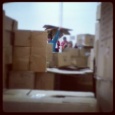
|
Children using iPads to blog about Cardboard Sculptures This activity is a cross curricula(subject) activity, involving a collaborative(tool) approach, giving children the opportunity to work together on a blog. Children were encouraged to engage in group talk(ta) and discussion(ta) in the classroom to reflect on the activity they were to report on. The activity furthers e-skills(topic) and e-safety(topic) through the use of whole class(ta) participation. The specific art activity provided a great stimulus for the blogging. Equally, however, this approach could be applied to any event in or out of school. The use of blogging and social media gave the opportunity for children to share their ideas with a wider audience, and also gave opportunities for real-time feedback to their work. The use of hand-held technology also enabled active learning(ta) as the portability of the iPads and iPods allowed them to be used outside the classroom.
| |
| CPD | Teaching Models | |

|
Concrete preparation – Action – Metacognition – Bridging - Mediation This resource offers advice on planning(ta) for interactive pedagogy. Three sub-sections have been drawn from it (see related DfE resources).
| |
| CPD | Choosing and Selecting Groups | |

|
What group am I in? Thinking about choosing and selecting groups This resource discusses various options for choosing groupings for group work(ta) activities, and their benefits and limitations.
| |
| CPD | Establishing Purpose for Writing | |

|
Why do we have to write it down? Thinking about why we write... This resource highlights some key types of text, and asks teachers to think about the key texts and language(ta) in their own subjects, and how tasks can be well designed to illicit purposeful writing in their classroom practice. Teachers should consider learning objectives(ta) for purposeful writing.
| |
| CPD | Encouraging Pupils to Ask Effective Questions | |

|
Getting pupils to do the questioning This resource describes some methods to encourage pupils themselves to engage in effective questioning(ta) - an active learning(ta) approach which may be useful in whole class(ta) or group work(ta) discussion(ta).
| |
| CPD | Group Work - Maintaining Momentum | |

|
Keep going! Maintaining momentum in group work activities This resource discusses some practical classroom management(ta) strategies for maintaining momentum in group work(ta) activities.
| |
| CPD | Developing Good Explanations | |

|
Say that again? Developing good explanations for classroom teaching This resource explores some characteristics of good explanations (including linking to questioning(ta)), explaining these thoroughly and linking them to pupils' ability to engage in active learning(ta)
| |
| CPD | Giving Written Feedback | |

|
Effective methods for written feedback This resource discusses written feedback in the context of assessment(ta) and giving clear learning objectives(ta) from any feedback given. While such feedback is often on homework(ta), the resource is intended more broadly than that.
| |
| CPD | Guide to the DfES Resource | |

|
Pedagogy and Practice: Teaching and Learning in Secondary Schools: Leadership guide This resource provides a general overview of the DfES Pedagogy resources (see related resources/below).
| |
| CPD | Questioning - Bloom's Taxonomy | |

|
Developing questioning through Bloom's taxonomy This resource discusses questioning(ta) and Bloom's taxonomy - which, at the higher levels, can be linked to higher order(ta) thinking skills and reasoning(ta).
| |
| CPD | Questioning Techniques | |

|
How do I question? Thinking about questioning techniques in the classroom This resource explores some alternative strategies to direct questioning(ta) including some advice and activities for supporting teachers in classroom practice.
| |
| CPD | Planning for Inclusion | |

|
Planning for inclusion in your classroom This resource discusses planning(ta) for inclusion(ta), in particular as related to active learning(ta), group talk(ta) and more generally interactive pedagogy.
| |
| CPD | Sharing Learning Objectives and Outcomes | |

|
What will they achieve - outcomes, objectives, and their importance This resource highlights the link between learning objectives(ta) and assessment(ta) for learning, and explores ways to engage in planning(ta) for, and write good learning objectives - which identify the learning to take place, as opposed to just the activity with which the pupils will engage.
| |
| CPD | Structuring Learning | |

|
Thinking about sequencing and planning for high quality pedagogy The resource includes relevant information regarding lesson and curriculum planning(ta) for high quality pedagogy.
| |
| CPD | Subject Specific Vocabulary | |

|
What's that word? Thinking about the language used in your subject This resource highlights the importance of subject-specific vocabulary(ta) and its consideration in teaching as well as offering some practical tips for encouraging its effective use, and remembering in classroom contexts.
| |
| CPD | Common Pitfalls in Questioning | |

|
Exploring problematic questions and ways to avoid them Questioning(ta) is a key classroom practice, and skill, and can sometimes fall into the trap of focusing on lower levels, as opposed to higher order(ta) reasoning(ta) and discussion(ta) skills. This resource covers some reasons why this - and other pitfalls - occur, with some practical advice for ensuring high quality questioning in your classroom.
| |
| CPD | Group Work - Group Size | |

|
What size group are we in today? Thinking about group size This resource discusses group work(ta) sizes, and the practical benefits and limitations of various group sizes - from individual work to whole class(ta) work.
| |
| CPD | Teaching for Metacognition | |

|
Thinking about Thinking, in the classroom context This resource describes some strategies to engage metacognitive reasoning(ta) - thinking about thinking, for example, asking pupils to think about their own learning techniques. It includes activities to assist teachers in planning(ta) for their own teaching.
| |
| CPD | Using Drama Activities in your Teaching | |

|
A lesson by any other name...Using Drama across the curriculum to enhance teaching This resource highlights some strategies to use drama(ta) activities in the teaching of other subjects. Drama(ta) can provide a useful cross curricula(i) way to prompt active learning(ta) and subsequent discussion(ta) and group talk(ta).
| |
| CPD | Giving Oral Feedback | |

|
Developing good practice in giving oral feedback This resource discusses giving oral feedback, particularly in the context of assessment(ta), which could include whole class(ta) discussion(ta) or group talk(ta), as well as questioning(ta) contexts.
| |
| CPD | Using Thinking Skills | |

|
What do you think? Exploring thinking skills for the classroom This resource highlights higher order(ta) reasoning(ta) skills and activities to prompt their use in classroom contexts.
| |
| Consecutive Sums | Using Prime and Square Numbers - How Old Am I? | |
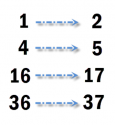
|
Last year I was square, but this year I am in my prime. How old am I? This short activity offers opportunity for pupils to engage in mathematical thinking(ta) and higher order(ta) problem solving/reasoning(ta). They should be able to make links between different areas of mathematics and explore their ideas in whole class(ta) discussion(ta) and questioning(ta).
| |
| Creativity | Exploring the intersections of digital literacy and creativity | |

|
A DEFT case study with Mundella Primary School, Sheffield This cross curricula(i) case study focusses on Digital Literacy, in particular using E-skills(topic) to: extend/update teaching skills and support CPD and explore the creative potential of digital technologies. The case study examines the potential of using mobile technologies to enhance creative aspects of learning.
One of the lesson ideas from the case study is available as a separate resource at Creating Digital Paintings using iPads | |
| Digital Art | Creating Digital Painting using iPads | |

|
Children using iPads to create observational drawings of flowers This activity is a cross-curricular(subject) activity, that gives children to opportunity to work independently on an art activity that also encourages the development of E-skills(topic). This activity encouraged inclusion(ta) as the children's final work was displayed as a collaborative(tool) piece, where all children had the opportunity to make an equal contribution.
In this instance, the children created observational drawings of flowers. However, the subject of the art could change to fit with any topic across the curriculum. The use of hand-held technology could also active learning(ta) as the portability of the iPads and iPods would allow them to be used outside the classroom, thus enabling observational drawings to be made in a range of locations. | |
| Digital Media | 21st century show and tell | |
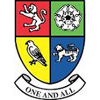
|
A DEFT case study with Dinnington Comprehensive, Rotherham This cross curricula(i) case study focusses on Digital Literacy, in particular using E-skills(i) to: support skills in writing/recording for a target audience and to improve communication and research skills through the process of creating OER(i)s. The case study illustrates issues involved in the use of video(i) for educational purposes, with an emphasis on students producing and releasing OERs. The method could also be used for self/peer assessment(i) with pupils.
One of the lesson ideas from the case study is available as a separate resource at Creating Instructional Videos. | |
| Discussion | The Environment for Group Talk in Science | |

|
"Ask questions rather than provide answers: ‘What’s the strength of his or her point?’ ‘How you could check that out?’ " This resource contains a set of activities and examples to discuss and work through based around maintaining group talk(ta) in whole class(ta) and group work(ta) settings, including setting up Ground Rules, and creating appropriate environments (physical and 'class rule' based) for argumentation(ta) and discussion(ta)
| |
| Ethics | Ethical issues in human reproduction | |
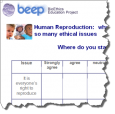
|
Why does reproduction raises so many ethical issues? When does life begin? This lesson outline stimulates A-level students to engage in discussion(ta), develop their reasoning(ta) skills and increase their awareness of the bioethical(topic) issues involved in human reproduction.
Background texts and open-ended questioning(ta) about human reproduction, contraception and IVF are provided as the stimulus. Small group discussion about these topics, writing on post-it notes, and reading case studies aim to get students reasoning(ta) to justify their opinions, and to compare and evaluate competing views. Finally, whole class(ta) discussion synthesises the emerging ideas and encourages students to consider changing their positions or adding additional issues to a recording table. | |
| Force | What makes a good paper airplane? | |

|
| |
| Force | Which material makes a good parachute? | |

|
A simple investigation into parachutes and air resistance This activity supports a number of learning types:
| |
| Force | Force in the early years | |

|
Thinking about the language of force This lesson idea highlights the scientific language(ta) around the topic of force, and through group work(ta) and whole class(ta) dialogue(ta) engages pupils in inquiry(ta) and the scientific method(ta) surrounding force.
| |
| Force | What floats and what sinks | |

|
Is getting in the bath a way to lose weight? This activity supports a number of learning types:
| |
| Force | Building bridges from a piece of A4 paper | |

|
A bridge too far... This activity supports a number of learning types:
| |
| Genetics | How DNA is sequenced: the stages | |

|
The complexity and scale of genome sequencing Students match diagrams of the stages of DNA sequencing with a list of text descriptions of the process. The lesson can involve students discussing in pairs / group work(ta), followed by a teacher or student-led plenary. Students would share ideas, come to a consensus and check the ‘whole class(ta) response’ with their version. The teacher's questioning(ta) can focus on scientific method(ta) and use of scientific language(ta). The lesson idea provides opportunities for the effective use of assessment(ta).
| |
| Genetics | Human Genome Project: from Sequencing to Sharing Genomic Information | |

|
Discuss and share economic, political and ethical issues. This resource provides guidance on how to use whole class(ta) discussion(ta) and/or small group work(ta) to engage students with the science and the economic, political, ethical(topic), legal and social issues of a scientific project such as the HGP. Its focus is on the scientific method(ta); language(ta) and the nature of scientific inquiry(ta).
| |
| Graph | Variation of human characteristics - Visualising Class data | |

|
A big survey of ourselves, measuring hands, feet and more The lesson offers the opportunity to explore measurement, relationships between measurement, and ways to visualise and summarise this data. The use of ICT(i) allows the teacher to enter data and for pupils to immediately see the impact this has on the pie chart and frequency tables (which are automatically updated). This also allows the teacher to change the 'range' for the frequency counts, and discuss with pupils the impact of this on the pie chart, and whether this is a good representation - encouraging the use of mathematical language(ta) and scientific method(ta) throughout. In collecting the data pupils have opportunity for some self-directed group work(ta) - to measure various lengths as described below - and the teacher could use whole class(ta) questions(ta) to explore the strategies taken to conduct this investigation(ta).
| |
| Group talk | Organising Group Talk in Science | |

|
The group in which students are expected to work has a huge bearing on their willingness to speak openly. Can we better manage group talk? This resource contains activities and examples relating to group talk(ta) in science lessons in whole class(ta) and group work(ta) settings.
| |
| ICT | Creativity and ICT | |

|
Building communities and exploring creativity This unit engages with the debates surrounding the term ‘creativity(tool)' and explores ways in which ICT(i) creates new opportunities for creativity and collaboration(ta)
| |
| ICT | IT in Secondary Science | |

|
A whole book of ideas for using generic ICT tools in science This book provides resources and lesson ideas with ICT(i) as a key focus for use in inquiry(ta) based learning and the scientific method(ta). It offers opportunities for use of group work(ta) and collaboration(ta) as well as whole class(ta) questioning(ta).
| |
| ICT | Creating Instructional Videos | |

|
Children create instructional videos to upload to YouTube This activity is a cross-curricular(subject) activity with a literacy focus, involving a collaborative(tool) approach, giving children to opportunity to work together to produce a set of instructional resources. Children were encouraged to engage in group talk(ta) and discussion(ta) in the classroom to reflect on what they should include in their videos. The activity furthers e-skills(topic) through the use of whole class(ta) participation. It develops e-safety(topic) skills through discussion of the issues relating to posting digital content online. Children were allowed to choose their own subject for the video, although this could be set by a teacher with a specific outcome in mind, or could be tailored to cover a particular topic or subject. It could, for instance, be used to explain their mathematical thinking(ta).
| |
| ICT | Infant and Primary Science Activities with Sensors | |

|
A compendium of investigations with sensors in primary science. This is a compendium of activities to engage pupils in inquiry(ta) based learning in the scientific method(ta), often making effective use of ICT(i) and sensors(tool). The activities involve whole class(ta) questioning(ta) and collaborative(ta) group work(ta).
| |
| ICT | The use of mobile apps for digital story-telling by nursery pupils | |

|
A DEFT case study This cross curricula(i) case study focusses on Digital Literacy, in particular using E-skills(topic) to: explore the creative potential of digital technologies for storytelling and to improve language skills. The case study explores the educational potential of mobile devices to support children's creative involvement with digital literacy. It also explores issues related to pupils using Web2.0 applications to share resources openly.
One of the lesson ideas from the case study is available as a separate resource at Telling Stories about Farm Animals | |
| ICT | Data Logging and Control | |

|
A compendium with numerous ideas for using sensors to teach science. This book provides a set of resources and lesson ideas with ICT(i) as a key focus for use in inquiry(ta) based learning and the scientific method(ta). It offers opportunities for use of group work(ta) and collaboration(ta) as well as whole class(ta) questioning(ta).
| |
| ICT | IT in Primary Science | |

|
A whole book of ideas for using generic ICT tools in science This book is a compendium of lesson ideas with ICT(i) as a key focus for use in inquiry(ta) based learning and the scientific method(ta). It offers opportunities for use of group work(ta) and collaboration(ta) as well as whole class(ta) questioning(ta).
| |
| ICT | Primary Science Curriculum Activities with Sensors | |

|
A compendium of investigations with sensors in primary science This resource provides a set of activities to engage pupils in inquiry(ta) based learning in the scientific method(ta), often making effective use of ICT(i) and sensors(tool). The activities involve whole class(ta) questioning(ta) and collaborative(ta) group work(ta).
| |

